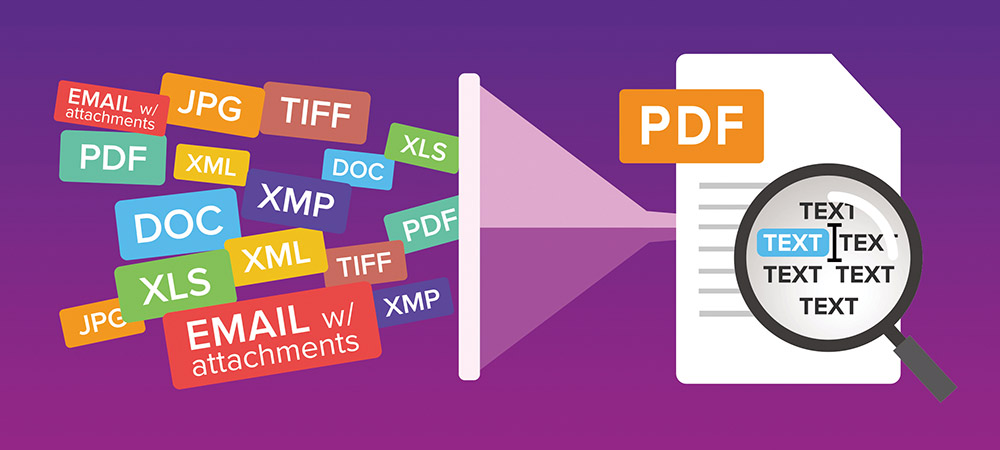DeeDee Kato of Foxit Software details the benefits of going digital and how firms can do so efficiently
Paperless initiatives are happening everywhere, whether you are a federal or state court system with e-filing requirements, or a hospital with fax-elimination/paper-elimination objectives. Law offices are no different. While there is doubt that firms will ever be entirely paperless, many have set high goals for paper reduction. Yet there are many things to consider, such as:
- Getting data into the system
– Standardising file formats
– Compressing files
- Preparing documents and collaboration
– Real-time shared reviews
– Maintaining confidentiality of client information
– Preventing unauthorised changes/ users
- Assembling documents for counsel or courts
– Bates numbering for easy indexing
– Portfolios
Getting data into the system
Digital data is preferred for investigations, due to being easily searchable, as opposed to paper documents. Unlike paper, digital information is impossible to destroy completely and can be in many formats, such as text, image, video, audio, websites, programs, etc. That said, complexity comes in maintaining all those different file formats and ensuring they are equally searchable, which makes the case for standardisation as part of the process of converting paper to digital.
Standardising file formats
When scanning documents, JPEG, PNG, TIFF and PDF are the most common file format options. The problem with JPEG, PNG and TIFF is that all are image files, which are not text searchable. Also, TIFF files are often large, making them difficult to send through email servers with strict size limits.
PDFs, on the other hand, are the worldwide standard for distributing electronic documents. They maintain their look and feel regardless of what system you are on. There are many free PDF readers. PDFs can be protected so text cannot be altered. You can also control who can access your PDF and whether it can be printed.
You can easily create PDFs from Office applications, or any software program that will print, and you can make forms with fillable fields to collect data that is entered.
Another benefit of PDFs is that you can make scanned PDFs into text-searchable documents with optical character recognition (OCR). This is important for e-discovery when you need to find documents for a discovery request, as collecting, imposing and reviewing evidence can be a nightmare otherwise.
While PDFs from Word, Excel or emails are always text searchable, there are other attributes you might want to apply. For example, using headers, footers, Bates numbering and watermarks might be necessary to your case filings. Protecting client confidentiality may be needed. Redacting information to eliminate personally identifiable information from the document or adding tags for section 508 accessibility might be required. And with many electronic case-filing systems requiring PDF/A for long-term storage, converting PDFs to PDF/A becomes important to embed information, such as font libraries, so that PDFs can be read in the future.
Using the right PDF software, all of this can be accomplished easily during conversion and can be automated across a large volume of PDF documents.
Compression
Many electronic filing systems will reject case submissions if the files are too large. Yet industry-leading mixed-raster content compression can result in file sizes of 100:1 for colour and 10:1 for black and white. Compressed files enable faster email and access to case documents, especially on mobile devices. Plus, smaller files reduce storage costs for organisations with large document repositories.
Preparing Documents for Attorneys or Sharing with Litigants
Maintaining confidentiality of client information
To protect confidential information, such as social security numbers, before being shared or e-filed, law firms may be required to redact parts of a document during a legal proceeding. A paralegal can mark any part of a PDF for redaction and an attorney can approve the redactions before applying permanent changes.

‘Digital data is preferred for investigations. The information is impossible to destroy. That said, complexity comes in maintaining all those different file formats.’
DeeDee Kato, Foxit
Preventing unauthorised changes
As files are being downloaded from document management systems, knowing who can view the data is essential to track your documents and keep them safe from leaks. Using PDF applications, you can set a variety of security levels and control what people can do with the document. You can restrict someone’s ability to copy text, delete pages, add comments, or print. You can even password-protect your PDF documents for extra security.
Real-time shared reviews
Like Google Docs, PDF documents can be shared with others and annotated in real time, which increases efficiency of team projects.
Assembling documents for counsel or courts
Bates numbering for easy indexing
During the discovery phase of litigation, documents might require unique identifiers on each page for reference and retrieval. Bates numbering (also known as Bates stamping, Bates branding, Bates coding, or Bates labelling) enables you to place identifying information, including company name, logo, numbers, date/time and copyrights, on them to identify critical content, such as images with copyrights.
Portfolios
When it comes to compiling information for case files, it is essential to accommodate different file types. With a PDF portfolio, you are no longer limited to PDF files. You can add audio, video, Word, Excel, HTML files and more into one digital binder, with subfolders for better organisation and easy access to data, making a PDF portfolio the perfect solution for e-discovery or deposition exhibits for a case.
Summary
Using PDF, you can create, convert, comment and organise digital documents within a single platform that is easily shared and archived. What is more, paper to digital conversions of email, TIFF and Office docs to PDF/A, high-quality OCR and file compression can all be automated through high-performance servers to give any size of law firm these benefits.

As Foxit Software’s senior director of marketing, DeeDee Kato is responsible for leading Foxit’s industry solutions. She has over 20 years of experience in product management and product marketing developing, and launching strategic offerings at HP, TIBCO Software, Fujitsu, Synactive (SAP partner) and Accellion. Kato has a computer science degree from the University of California, Berkeley.
DeeDee Kato, senior director of marketing, Foxit Software














